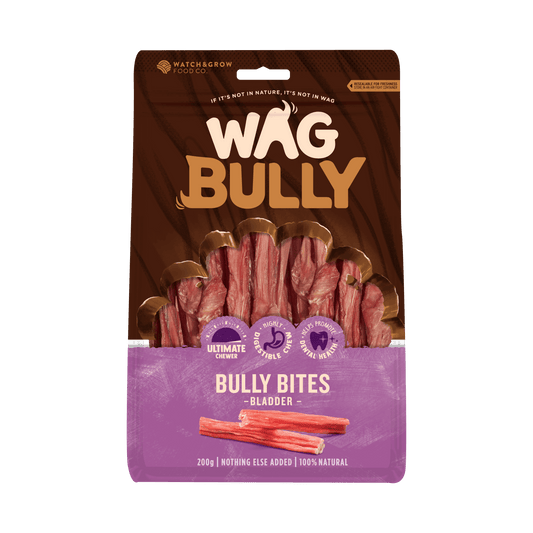Lone Wolves Unleashed: Why Some Dogs Prefer Solitude Over Socialising
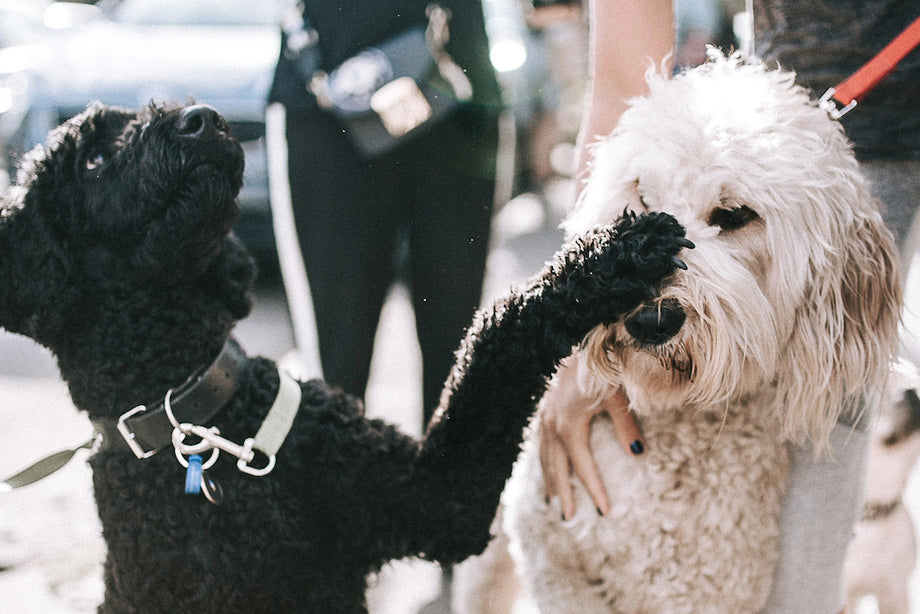
Have you ever wondered why your dog seems to be the social recluse of the dog park?
If your furry companion seems to say, "I want to be alone," when faced with potential four-legged friends, you're not the only one.
This month’s blog is for everyone wondering “why doesn’t my dog like other dogs” and are puzzled by their pup's picky social preferences. We are going to discuss doggy socialisation, behaviour and the reasons why your dog might be a little shy when it comes to making new furry friends.
The ‘doggy persona’
Just like us humans, every dog has its own unique personality and preferences. Some are the life of the party, ready to wag their tails and play with every dog in sight, while others are more reserved, preferring the company of their human companions over the canine crowd.
Recognising and respecting your dog's unique doggy persona is the first step to understanding their social behaviour. It's what makes your dog, well, your dog!
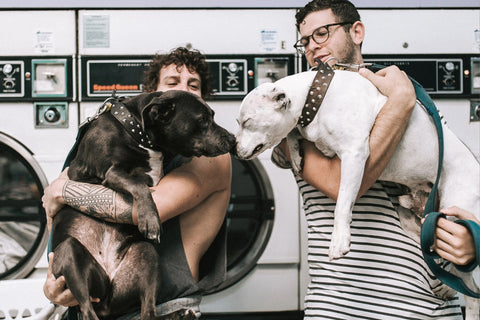
What is the deal with canine communication?
Dogs, in their own intricate and fascinating way, converse through a rich tapestry of body language, facial expressions, and vocalisations, crafting a unique doggy dialect that's as complex as any human language.
This canine communication system, however, isn't without its own quirks. Just like humans can misinterpret a text message or a tone of voice, dogs too can misread the signals sent out by their fellow four-legged companions.
Take, for instance, the play bow – that universal doggy gesture where a dog lowers its front legs and raises its back end, signaling an invitation to play. While one dog might see this as a friendly overture, another could perceive it as overly bold or even threatening, depending on their personality, past experiences, or even their mood at that moment. This misinterpretation can quickly turn a potential playdate into a snub, with one dog left wondering what went wrong.
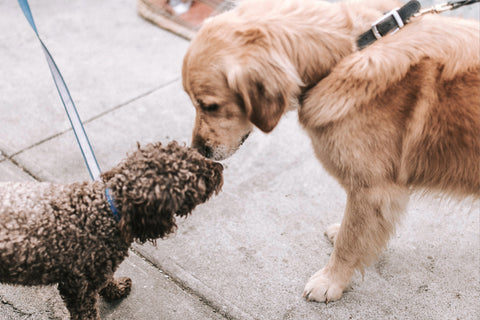
Moreover, vocalisations such as barks, growls, whines, and yips can vary widely in meaning, depending on their pitch, duration, and context. A low-pitched growl could be a warning, while a high-pitched bark might be an expression of excitement. To the untrained ear, these sounds might seem random, but to dogs, they're meaningful components of conversation.
Deciphering doggy body language
Dogs have their own special way of telling us how they're feeling without saying a word. It's all in their body language! When your dog is happy and relaxed, you might see them with a gently open mouth and their tail wagging like they're waving hello. This means they're in a great mood! But if they're standing very still, with their ears flat against their head and showing their teeth, it's their way of saying they're not feeling too friendly or they might be scared.
The subtleties of dog communication are vast and varied. Understanding this doggy dialect is crucial for pet owners and dog lovers alike, as it helps us navigate the sometimes-tricky terrain of canine social interactions.
By paying close attention to these non-verbal cues, we can better interpret what our furry friends are trying to say, leading to stronger bonds and happier, more harmonious relationships between dogs themselves, as well as between dogs and their human companions.
To read more: Decoding Dog Body Language: A Guide To Understanding Your Furry Friend’s Communication
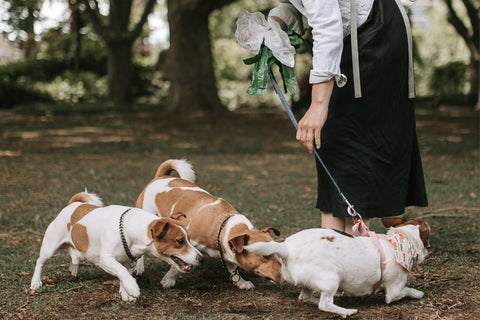
How do past experiences impact a dog?
Every dog has a story, and sometimes their past adventures with other pups might not have been the happiest. This can make them a little shy or even a bit unsure about making new furry friends.
But here's the good news – with lots of love, patience, and some gentle encouragement, we can help our four-legged pals find joy in meeting new buddies and create some pawsitively wonderful new memories together. It's all about giving them the time they need to realise that the world is full of friendly faces and potential playmates!
It's important to remember that if your furry friend isn't in the mood to mingle with other dogs, as clearly shown by their body language, it's best not to push them into socialising. Dogs have a knack for communicating when they're ready for playtime with their peers. Listening to their cues will ensure they feel safe and happy.
How to improve your dog’s social skills with positive reinforcement
Improving your dog's social skills doesn't have to be a daunting task. Simple, consistent training techniques can make a world of difference. Using positive reinforcement to reward good social behaviour is key. Every polite sniff, calm introduction, or playful interaction can be celebrated with a treat, a cuddle, or a cheerful "Good boy/girl!" Speaking of treats...
Treat time: WAG's way of winning friends
WAG's natural dog treats aren't just delicious; they're a fantastic tool for socialisation efforts. Whether you're encouraging your dog to interact nicely with others or rewarding them for a successful meet-and-greet, these healthy, natural treats can be a great motivator.
Plus, sharing is caring — offering a treat to both your dog and their new acquaintance can create positive associations and make future interactions something to look forward to. So don’t forget to pack some Beef Jerky or Kangaroo Cubes next time you hit the dog park!
Celebrating differences: the joy of doggy quirks
Every doggo is an individual, with their own likes, dislikes, and quirks. Embracing these differences is what makes the bond between dogs and their humans so special. Celebrate your dog's unique personality, whether they're a social butterfly or a selective lone wolf. After all, it's their distinctive traits that make them, them.
Some pups would rather stick close to their humans than frolic with other furry friends – and that's perfectly fine! It's just their way of saying, “You're my favourite pack!” Embrace it; it's a sign of their love, trust and unique personality shining through.
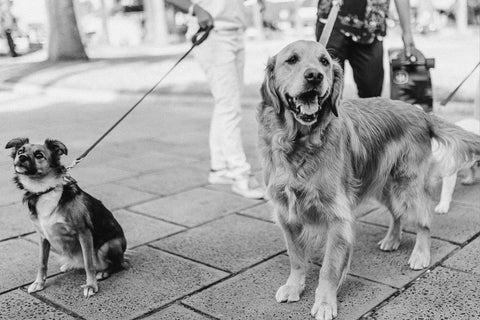
When to call in the experts
While understanding and patience can solve a social snag, sometimes professional help is needed. If your dog's social behaviour is causing concern, consulting a professional dog trainer, vet, or behaviourist can provide tailored advice and strategies. There's no shame in seeking help; it's a sign of love and commitment to your dog's wellbeing.

Let’s make every tail wag!
By recognising our dogs' unique personalities, respecting their communication styles, social preferences, understanding the impact of past experiences, and using positive reinforcement (with a little help from WAG's natural dog treats), we can enhance their social lives within their comfort zones.
So, next time you're at the dog park and your pup decides to sit this one out, remember, it's just their way of saying they're happy in their own company. And that's okay! With a little understanding, encouragement, and the right approach, we can help our dogs navigate the world of canine friendships, at their own pace.
Shop the Recipe
Up Next
Why Does My Dog's Breath Stink? Uncover the Secrets to Fresher Breath!



